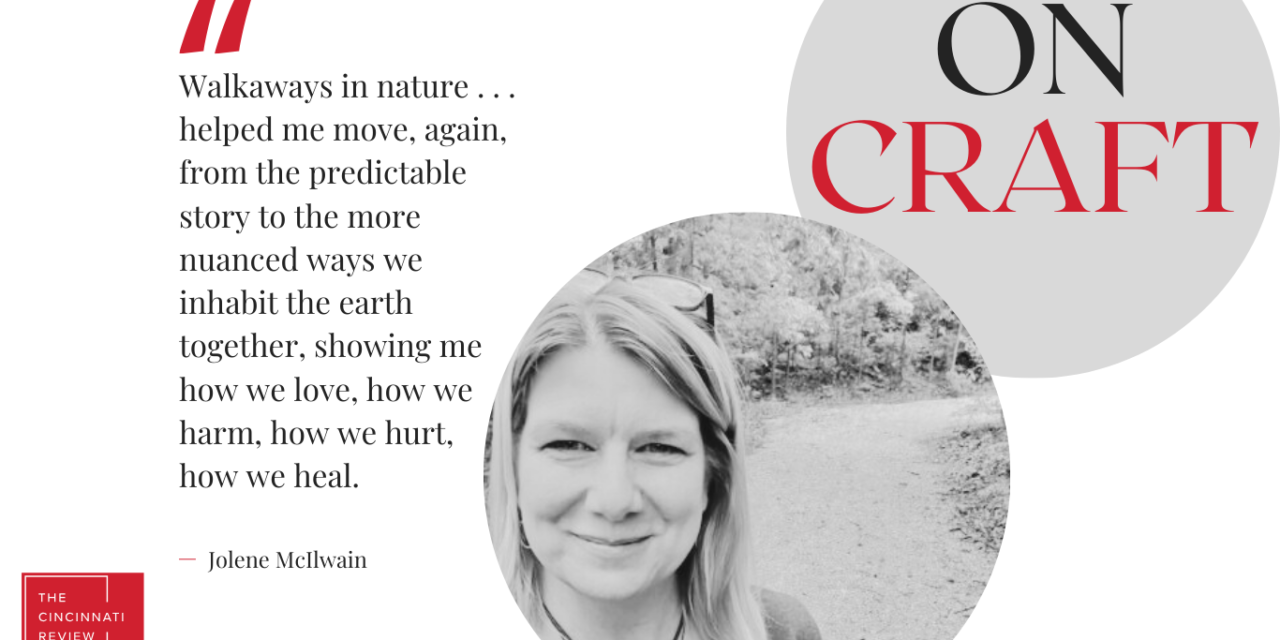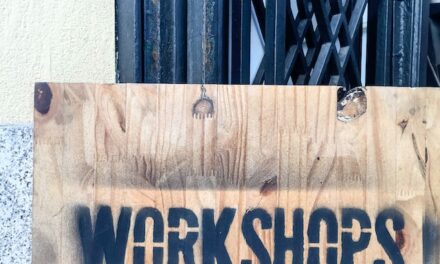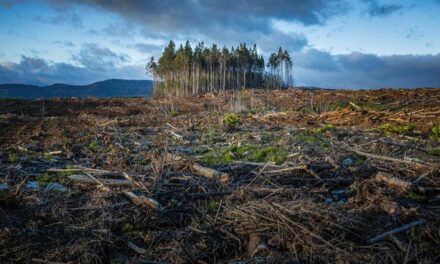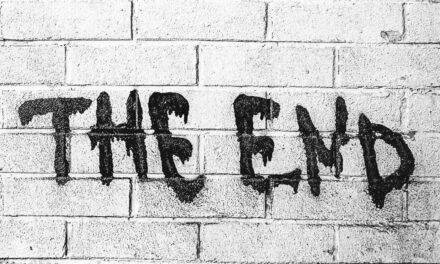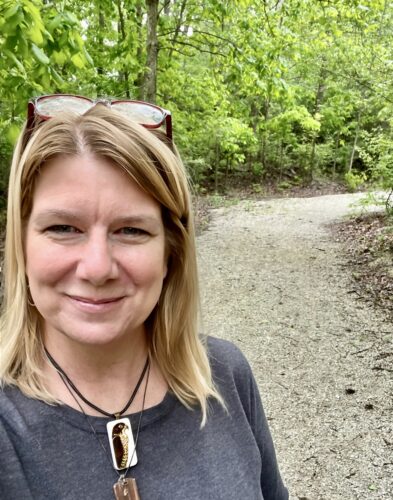
Jolene McIlwain was one of the first writers picked from the queue for our miCRo series (we solicited the first few, to kick off a new series that people didn’t know about yet) in the fall of 2017 (here’s her story, “Drumming”), and we were thrilled when an agent reached out to us asking to be put in touch with her. We also published an essay of hers in Issue 15.2 and interviewed her for the blog in 2019. We’re glad to continue to be connected to Jolene, including with this craft essay she wrote recently on nature and revision:
“The natural object is always the adequate symbol.”
—Ezra Pound, “A Few Don’ts by an Imagiste”
“These people have learned not from books, but in the fields, in the wood, on the river bank. Their teachers have been the birds themselves, when they sang to them, the sun when it left a glow of crimson behind it at setting, the very trees, and wild herbs.”
—Anton Chekhov, “A Day in the Country”
The Juvenile Hawk
The sound, desperate. A baby hawk in the trees. Maybe injured? Wanting its mom and dad? This was day two of the wretched crying. The first day I’d heard it here at our camp in the woods, while picking up sticks for kindling, it was farther off. Now, its crying—while I tried to work on a writing project—dwarfed everything: the bee whine, the skittering of chipmunks and wrens.
I’d been grappling with a tough scene about a young arsonist named Jeep who’s readying to set yet another building aflame—peering into the head of a kid I could not yet seem to understand. I scribbled down questions: “But WHY does Jeep set fires?” “What does Jeep want?”
On hold with the Audubon Society, I walked closer to the treeline, watched for movement in the massive nest. A kind, familiar voice came through: “What can I help you with?” I explained, and there was a chuckle, then “It’s likely okay. Just hungry and learning.” They offered explanations about nesting, typical behavior of juveniles, actions of parent raptors, especially how they wean their young. I thanked them.
Even though the hawk kept crying, I went back to my writing, the questions I’d posed. And like so many times before, this image from nature helped me. Within minutes, I found the interior world of my young male arsonist. Jeep’s acts suddenly had everything to do with a desperate abandonment, being weaned too soon, and a deep crying, persistent, that no one seemed to hear. His crying, in teenage years, had turned to burning.
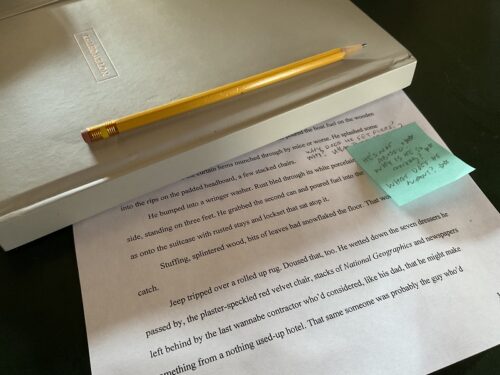
The Power of Metaphor
I learned early that nature gives us our metaphors: so many of our idioms, our cautionary tales, our most didactic stories for youth use animals as concrete stand-ins for our themes of mercy, justice, courage, cowardice. But as we get older, we sometimes forget to keep looking. To see nature for ourselves. We forget to challenge and interrogate those early stories of “The Tortoise and the Hare” and others, or we treat them as clichés, or we forget about them altogether.
I’ve learned so much from expert contemporary nature writers, how they move past cliché and use lessons and images from nature in the most exacting and original ways to illustrate all sorts of dilemmas and complicated human actions. One of my favorite writers, the late poet Jane Kenyon, paired her lyricism with perfect concrete detail from nature. She used trees, ponds, flowers, birds, and especially walks with her beloved dog, Gus, to show us how to resee the difficult subjects of loss, death, depression. She had an amazing ability to move deeply into a realm that connects us to nature’s ongoing story.
This juvenile hawk event provided a concrete image and an answer. I only had to incorporate this metaphor. In his book, The Poetry Home Repair Manual (University of Nebraska Press, 2007)—my earmarked, annotated-to-death copy is never far from my desk—another favorite poet, Ted Kooser, talks about how to use comparison: “Because making a comparison is a means of taking a step back from reality and then looking at it in a new way, the comparison in itself is a device of detachment and restraint.” He goes on to explain that it can be something we need in our work in order to veer away from “raw emotion, even sentimentality.”
In my story, I don’t tell you Jeep is suffering because of his difficult relationship with his mother. I utilize a comparison. When Jeep comes upon the hawk for the first time, I write:
“That baby hawk Jeep had first heard on his walk to the hotel started up again blowing out its cry for its mother. It had been pushed from the nest to learn to hunt on its own and it was more than hungry-sounding. It was scared. But Jeep couldn’t think about it now. He searched his cargo shorts for matches. Found them in his shirt pocket.”
And then at the end of the scene I continue with:
“That baby hawk whistle-screamed again and again. Why couldn’t its damn mother throw it a garter snake from her high flight? Why couldn’t it find a damn rabbit to hunt? Why couldn’t it just die?”
Of course, Jeep is self-critical. And Jeep is the baby hawk.
The Adult Hawk
At my home in town, I’d just refilled my bird feeders. It was a bitter day, spring still holding itself at bay. Wrens and phoebes jumped and flitted. I returned inside, took up my place near the window, and opened a document for a story I’d been working on. A girl goes missing. A search. A whodunit. But I was instantly bored with it.
I got up to make tea. But when I looked to see how the birds were making out, how much they’d already spilled from the feeders, there weren’t any.
After my tea steeped, I asked myself several questions in the margin of my story:
“Who cares most that she’s missing/dead?”
“What if the killer isn’t the most obvious person?”
“MISDIRECT the reader.”
“Why would anyone want to harm her?”
“Was it accidental or intentional?”
“Could anyone have stopped the crime?”
When I passed the window a second time, I saw a large bird on the fence post near the feeders. It turned its head, shifting, like something out of a Hitchcock film. Intellectually, I knew hawks were raptors, predators of small birds. The Audubon volunteer had made this clear when I’d called about the baby hawk months before. Yet I’d forgotten on some level, and I’d become an unintentional accomplice by setting these birds up.
I knocked on the window. The bird, a Cooper’s hawk, cocked its head toward me. It wouldn’t be scared away. I ran outside and flapped my “wings,” and it slowly took off, finding a higher perch on a telephone pole. I sat back down, heart still racing, still concerned for the smaller birds. I read the questions I’d posed.
And that’s when I got it. This story was not about who did it but about who unknowingly assisted in the crime, the person whose actions created the perfect opportunity for a death. The restaurant owner in my story “Those Red Boots” who’d dressed his waitresses in sexy outfits had unknowingly put them in harm’s way.
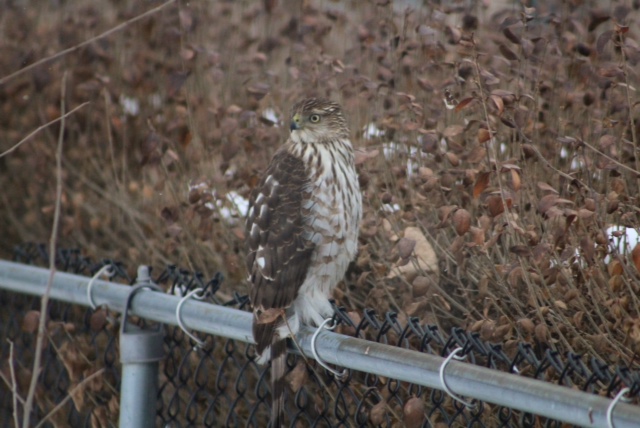
The Walkaway
Not everyone will walk away from a computer into the vast outdoors and find help from a hawk. But over time, these “focused walkaways,” which were first unexpected distractions, have become a scheduled part of my practice, my discipline.
Laraine Herring, in The Writing Warrior (Shambhala, 2010), says: “I too have witnessed and experienced the pain of forcing a piece of work to arrive before it’s ready. That work will not be healthy. It cannot stand on its own.” In trying to keep myself and my work “healthy,” I need time for lots of focused, refueling walkaways in nature.
For a long time, I resisted that model. Growing up, I was taught never to give up, and I’d made my own strict rules: The reason you can’t do that is because you aren’t smart enough, educated enough, dedicated enough. But we should remember that our early drafts of a story or poem likely hold all the answers, which we can see only when we’re relaxed, alert, and believing in ourselves—not run ragged, not beating ourselves up, not frustrated.
I took note of the kinds of activities that truly relaxed and refueled me (hint: it wasn’t doomscrolling, refreshing email, or checking social media notifications). The most breakthroughs came while I was paying attention to the natural environment outside my rural home, gardening, driving a long, familiar commute into the city, etc. In fact, most of my stories included in Sidle Creek (Melville House, 2023) were written in this fashion.
The Focusing Questions
I make sure to note a few questions before walking away from the page toward my refueling activity. Then, after the refuel, and sometimes during it, I revisit the questions. (It’s actually effective if you’re so enmeshed in the activity that you forget the questions altogether.)
When I get back to my project and find the questions, I’m usually sharper, more open to seeing new ideas and solutions than before. I use three question categories: Did I miss the forest for the trees? How’s the weather? And is this a bird or worm’s POV?
Did I miss the forest for the trees?
In both examples above, I was so focused on how Jeep might set his fires (in the first story) and on the list of potential suspects (in the second story), I missed the big picture of both. Often, we forget we can be staring at what I might call the bark of a story (or lichens or mosses on the surface of those stories) instead of looking at the forest/the world of the story we’re creating. I’m detail-oriented, at times to a fault, and my poetry background leads me to hierarchize singular word choices, concrete images. Detail work is what makes a piece sing, but at certain stages in the writing process, it can get in the way.
For example, I’m ready to walk away, go outdoors, weed the garden, so I make some frustrated-sounding notes, like “Why am I not feeling connected AT ALL to this character?” “What does my character desire?” “What’s his worldview?” Maybe I have this “meh” scene where my character is simply sitting in the Sheetz gas station parking lot, noticing butterflies flying around the shrubbery. I know I need to work on the scene or cut it altogether. But I’ve overlooked what my subconscious is telling me about my character—that they’re dealing with fantasies of flight. Okay, now those butterflies make more sense . . .
We are sometimes instructed to not worry about the theme, or the big “idea” of our story, until much later in the process, but I think each story has different needs. If you find yourself looking too closely at the concrete objects or smallest details of your story, open it out a bit. Maybe by focusing too closely on the minute details of the lichens on each tree, you’ve lost a sense of the overall meaning of your story—that whole forest.
How’s the weather?
I’ve always been an outdoor girl. Snow, sleet, rain, and record-high temps haven’t kept me indoors. When I see authors using literal weather in stories, I’m instantly drawn in, and emotional weather finds itself in the story’s tone, mood, and the shifting of those aspects.
A question you might ask before you walk away from your project is: “What’s the emotional weather of my story, of my characters’ personalities?” When you into get outdoors, look closely at the details and effects of weather on waterways, plants, wildlife—on YOU!
One day I ventured outdoors after walking away from a scene with a chatty character, having obsessed over her rambles, her cadences, her dialect and slang, her repeating phrases. Normally, that time of day, that time of year, birds and squirrels would have been chatty. I didn’t hear anything—and the sky took on that green hue before a storm. I realized how powerfully that silence affected me. When I went back inside, I cut all the dialogue and rendered my chatty character as uncharacteristically quiet in a scene, to show an oncoming storm. I changed the way my character’s weather looked, and it made the story better.
A bird’s-eye or worm’s-eye view? A snake’s or an owl’s?
Sometimes the wrong character is telling the story. Or we need to see, hear, feel, taste, and smell things more clearly. In nature, our senses become more attuned. Try writing a scene in a new POV using only one sense as primary, and notice how that reveals new ideas. I learned this lesson from walking my dog, Hank. He stopped to sniff so many things I would have never even considered. When I read Jane Kenyon’s poems, especially those including her dog, Gus, I realized that it was certainly her walks with Gus—her time away from the page—that helped make her poems into pieces that would sing to me and to so many others.
Walkaways in nature opened me up to envisioning how I could create a comparison between my characters and hawks, and they helped me move, again, from the predictable story to the more nuanced ways we inhabit the earth together, showing me how we love, how we harm, how we hurt, how we heal.
In both cases outlined above, I walked away from my project during the tough revision process because of what I first defined as distraction or interruption, maybe even a failure to stay focused. Now I know that practicing refueling walkaways—paired with some prompting, focusing questions—is a tried-and-true tool in my toolbox, alongside the many lessons my favorite teachers and writers have taught me.
When you’re seeking an answer in your story or poem’s world, take time to ask yourself some questions, then get outside, look around, watch, listen, feel closely. You’ll likely find your answers.
Jolene McIlwain is the author of Sidle Creek (Melville House, 2023) NPR and Library Journal Best Book of the Year, Publishers Weekly starred review. Her work has been nominated for Best American Short Stories, Best of the Net, and the Pushcart Prize and appears in Best Small Fictions. She was born, raised, and currently lives in a small town in the Appalachian plateau of Western Pennsylvania. More at www.jolenemcilwain.com

